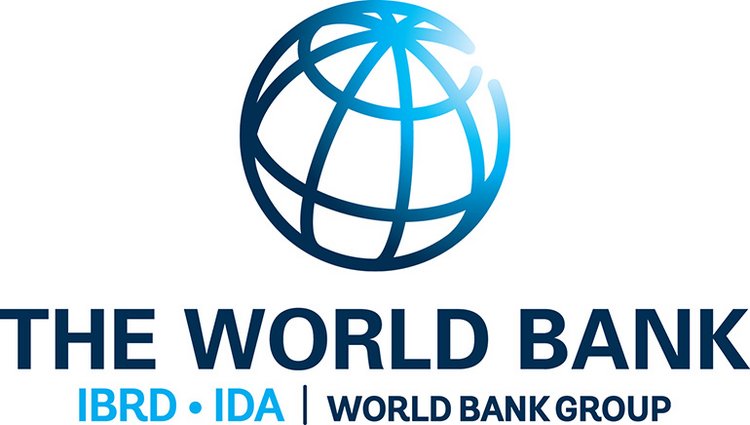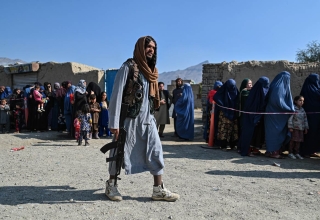
Mounting debt and slowing productivity growth
| WASHINGTON: A World Bank report and press release said the other day that a year after its weakest performance since the global financial crisis ten years ago, the global economy is poised for a modest rebound, adding ominously – “if everything goes just right!” The report said global growth would edge up to 2.5% in 2020 as investment, trade gradually recover, but that outlook was fragile, subject to substantial downside risks. Advanced economy growth would slip to 1.4%, it said, mainly reflecting lingering weakness in manufacturing. |
The press release said global economic growth is forecast to edge up to 2.5% in 2020 as investment and trade gradually recover from last year’s significant weakness but downward risks persist, quoting the World Bank’s January 2020 Global Economic Prospects report.
The report said: Growth among advanced economies as a group is anticipated to slip to 1.4% in 2020 in part due to continued softness in manufacturing. Growth in emerging market and developing economies is expected to accelerate this year to 4.1%. This rebound is not broad-based; instead it assumes improved performance of a small group of large economies, some of which are emerging from a period of substantial weakness. About a third of emerging market and developing economies are projected to decelerate this year due to weaker-than-expected exports and investment.
“With growth in emerging and developing economies likely to remain slow, policymakers should seize the opportunity to undertake structural reforms that boost broad-based growth, which is essential to poverty reduction,” said World Bank Group Vice President for Equitable Growth, Finance and Institutions, Ceyla Pazarbasioglu. Steps to improve the business climate, the rule of law, debt management, and productivity can help achieve sustained growth.”
Download the January 2020 Global Economic Prospects report
The WB report said U.S. growth is forecast to slow to 1.8% this year, reflecting the negative impact of earlier tariff increases and elevated uncertainty. Euro Area growth is projected to slip to a downwardly revised 1% in 2020 amid weak industrial activity.
Even if the recovery in emerging and developing economy growth takes place as expected, per capita growth would remain well below long-term averages and well below levels necessary to achieve poverty alleviation goals.
The Fourth Wave: Recent Debt Buildup in Emerging and Developing Economies: There have been four waves of debt accumulation in the last 50 years. The latest wave, which started in 2010, has seen the largest, fastest, and most broad-based increase in debt among the four. While current low levels of interest rates mitigate some of the risks associated with high debt, previous waves of broad-based debt accumulation ended with widespread financial crises. Policy options to reduce the likelihood of crises and lessen their impact should they materialize include building resilient monetary and fiscal frameworks, instituting robust supervisory and regulatory regimes, and following transparent debt management practices.
Fading Promise: How to Rekindle Productivity Growth: Productivity growth, a primary source of income growth and driver of poverty reduction, has slowed more broadly and steeply since the global financial crisis than at any time in four decades. In emerging market and developing economies, the slowdown has reflected weakness in investment and moderating efficiency gains as well as dwindling resource reallocation between sectors. The pace of improvements in many key drivers of labor productivity—including education and institutions—has slowed or stagnated since the global financial crisis.
Price Controls: Good Intentions, Bad Outcomes: The use of price controls is widespread in emerging market and developing economies. While sometimes used as a tool for social policy, price controls can dampen investment and growth, worsen poverty outcomes, cause countries to incur heavy fiscal burdens, and complicate the effective conduct of monetary policy. Replacing price controls with expanded and better-targeted social safety nets, reforms to encourage competition and a sound regulatory environment can be pro-poor and pro-growth.
Low for How Much Longer? Inflation in Low-Income Countries:
Inflation in low-income countries has tumbled to a median of 3% in mid-2019 from 25% in 1994. The decline has been supported by more flexible exchange rate regimes, greater central bank independence, lower government debt, and a more benign external environment. However, to maintain low and stable inflation amid mounting fiscal pressures and the risk of exchange rate shocks, policymakers need to strengthen monetary policy frameworks and central bank capacity and replace price controls with more efficient policies.
Regional Outlooks:
EAST ASIA AND PACIFIC: Growth in the region is projected to ease to 5.7% in 2020, reflecting a further moderate slowdown in China to 5.9% this year amid continued domestic and external headwinds, including the lingering impact of trade tensions. Regional growth excluding China is projected to slightly recover to 4.9%, as domestic demand benefits from generally supportive financial conditions amid low inflation and robust capital flows in some countries (Cambodia, the Philippines, Thailand, and Vietnam), and as large public infrastructure projects come onstream (the Philippines and Thailand). Regional growth will also benefit from the reduced global trade policy uncertainty and a moderate, even if still subdued, recovery of global trade.
EUROPE AND CENTRAL ASIA: Regional growth is expected to firm to 2.6% in 2020, assuming stabilization of key commodity prices and Euro Area growth and recovery in Turkey (to 3%) and Russia (to 1.6%). Economies in Central Europe are anticipated to slow to 3.4% as fiscal support wanes and as demographic pressures persist, while countries in Central Asia are projected to grow at a robust pace on the back of structural reform progress. Growth is projected to firm in the Western Balkans to 3.6% — although the aftermath of devastating earthquakes could weigh on the outlook — and decelerate in the South Caucasus to 3.1%.
LATIN AMERICA and The CARIBBEAN: Regional growth is expected to rise to 1.8% in 2020, as growth in the largest economies strengthens and domestic demand picks up at the regional level. In Brazil, more robust investor confidence, together with a gradual easing of lending and labor market conditions, is expected to support an acceleration in growth to 2%. Growth in Mexico is seen rising to 1.2% as less policy uncertainty contributes to a pickup in investment, while Argentina is anticipated to contract by a slower 1.3%. In Colombia, progress on infrastructure projects is forecast to help support a rise in growth to 3.6%. Growth in Central America is projected to firm to 3% thanks to easing credit conditions in Costa Rica and relief from setbacks to construction projects in Panama. Growth in the Caribbean is expected to accelerate to 5.6%, predominantly due to offshore oil production developments in Guyana.
MIDDLE EAST and NORTH AFRICA: Regional growth is projected to accelerate to a modest 2.4% in 2020, largely on higher investment and stronger business climates. Among oil exporters, growth is expected to pick up to 2%. Infrastructure investment and business climate reforms are seen advancing growth among the Gulf Cooperation Council economies to 2.2%. Iran’s economy is expected to stabilize after a contractionary year as the impact of US sanctions tapers and oil production and exports stabilize, while Algeria’s growth is anticipated to rise to 1.9% as policy uncertainty abates and investment picks up. Growth in oil importers is expected to rise to 4.4%. Higher investment and private consumption are expected to support a rise to 5.8% in FY2020 growth in Egypt.
SOUTH ASIA: Growth in the region is expected to rise to 5.5% in 2020, assuming a modest rebound in domestic demand and as economic activity benefits from policy accommodation in India and Sri Lanka and improved business confidence and support from infrastructure investments in Afghanistan, Bangladesh, and Pakistan. In India, where weakness in credit from non-bank financial companies is expected to linger, growth is projected to slow to 5% in FY 2019/20, which ends March 31 and recover to 5.8% the following fiscal year. In Pakistan’s growth is expected to rise to 3% in the next fiscal year after bottoming out at 2.4% in FY2019/20, which ends June 30. In Bangladesh, growth is expected to ease to 7.2% in FY2019/2020, which ends June 30, and edge up to 7.3% the following fiscal year. Growth in Sri Lanka is forecast to rise to 3.3%.
SUB SAHARAN AFRICA: Regional growth is expected to pick up to 2.9% in 2020, assuming investor confidence improves in some large economies, energy bottlenecks ease, a pickup in oil production contributes to recovery in oil exporters and robust growth continues among agricultural commodity exporters. The forecast is weaker than previously expected reflecting softer demand from key trading partners, lower commodity prices, and adverse domestic developments in several countries. In South Africa, growth is expected to pick up to 0.9%, assuming the new administration’s reform agenda gathers pace, policy uncertainty wanes, and investment gradually recovers. Growth in Nigeria expected to edge up to 2.1% as the macroeconomic framework is not conducive to confidence. Growth in Angola is anticipated to accelerate to 1.5%, assuming that ongoing reforms provide greater macroeconomic stability, improve the business environment, and bolster private investment. In the West African Economic and Monetary Union, growth is expected to hold steady at 6.4%. In Kenya, growth is seen edging up to 6%.





